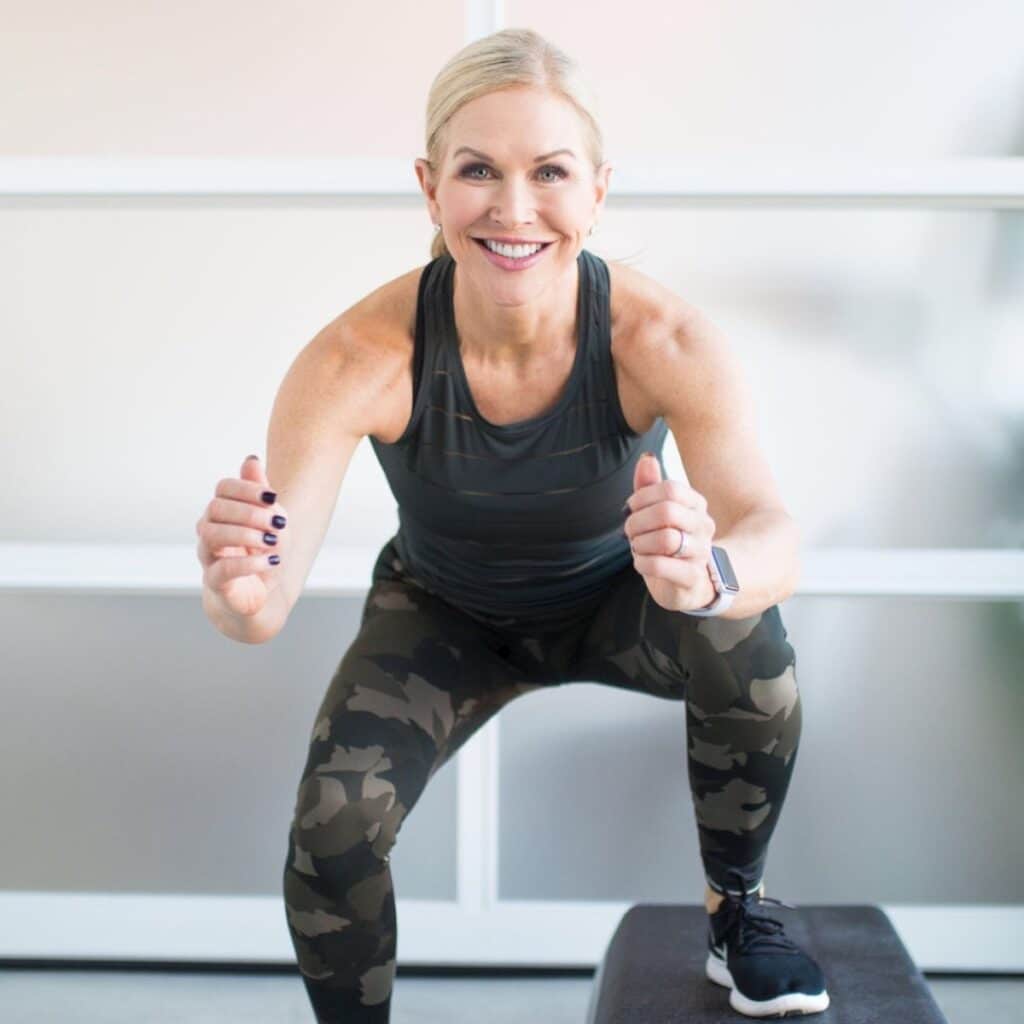This post contains affiliate links. Please see our disclosure policy.

The glute bridge is one of the most effective exercises to tone your glutes and hamstrings. It also has the added benefit of engaging and strengthening the core, hip, and lower back muscles. The glute bridge is a powerhouse move that can help you build strength, improve posture, and sculpt a toned, firm booty!

Save This Article To Read Later
Glute Bridge Instructions
Here’s how to do the glute bridge exercise:
- Lie flat on your back with your knees bent and feet flat on the floor, hip-width apart.
- Place your arms by your sides with palms facing down for stability.
- Ensure your feet, hips, and shoulders are in a straight line.
- Tighten your abdominal muscles to maintain proper form and protect your lower back.
- Push through your heels and lift your hips off the ground towards the ceiling, squeezing your glutes at the top of the movement.
- Hold the elevated position for 1-2 seconds, maintaining tension in your glutes and core.
- Slowly lower your hips back down to the starting position, keeping control of the movement.
Repetitions: Perform 10-15 repetitions for 3-4 sets, resting for 30-60 seconds between each set.
Progression: Increase difficulty by adding resistance bands or weights, or by progressing to the elevated feet variation or single-leg glute bridge.
Skip to 0:25 seconds to see Chris Freytag perform glute bridges:
Glute bridges work nearly every lower body muscle, including glutes, quads, hamstrings, and calves, as well as your core. This exercise works on flattening your tummy, helps tone the muscles that give definition to your six-pack, and gives you a more defined waistline by working the obliques.
Glute Bridge Benefits
There are many reasons you should learn good form when doing glute bridges and just as many reasons you should incorporate them into your workouts. Here are just a few:
Works Your Core
Glute bridge is an exercise that works the entire core. It’s probably obvious that the glute bridge works your glutes, given its name. In addition, you use your abdominals to pull your body up and hold it in the lifted position.
Your entire core is fired up during this isometric move making it one of the best core exercises around for core stability.
Strengthens Your Back
The Glute bridge is an awesome way to strengthen your back and help you avoid lower back pain. As you lift and engage with your core and glutes, you also activate your hamstrings and lower back muscles to keep everything stable.
Stretches Your Chest and Shoulders
The glute bridge is also a great way to get a good stretch in your chest and anterior deltoids or shoulders. The front of the body opens as you lift your body into the bridge. You can add an extra upper body stretch by clasping your hands below your back and pressing them into the floor.
Easy Ways to Incorporate Glute Bridges Into Your Workouts
A glute bridge can be done as a stand-alone exercise and give you great results and improve your fitness level. But you could also incorporate the glute bridge into a plan with other exercises, including during a good warm-up, during leg workouts, or a full-body workout.
Use Glute Bridges in Your Warm-Up
Because the glute bridge helps to activate and fire up the glutes, it is a good idea to add it in and get a good warm-up. Use the glute bridge in your warm-up like this one:
Warm-Up With Glute Bridge
- 5 inchworms
- 20 hip circles alternating right and left (bring the knees up and around)
- 10 arm circles forward
- 10 arm circles backward
- 10 Glute Bridges – hold each one at the top for 5 seconds and squeeze
Use Glute Bridges For a Lower Body Workout
Often, we think of working our lower body with squats and lunges. However, a glute bridge is another excellent way to get this kind of work done, and it includes more hamstring than some of these other moves, making a great compliment to squats and lunges. A sample workout is listed below.
Leg Day Workout
- 10 Glute Bridge
- 10 Cross Behind Lunge
- 10 Deadlifts
- 10 Backward Lunges
- 10 Stiletto Squats
Rest 20 seconds, then repeat the sequence one more time
Use Glute Bridges In Your Circuit Training
Circuits are a fun way to exercise and get your strength and cardio in all at the same time. The idea behind circuit training is to go from one move, or one “station”, to the next with little or no rest in between. Check this out:
Full Body Circuit Training Workout: Move directly from one exercise to the next with little to no break in between exercises. Rest for 1 minute at the end, then repeat the sequence.
- 30 seconds burpees
- 30 seconds reverse grip double arm row
- 30 seconds jumping jacks
- 30 seconds push-ups
- 30 seconds skaters
- 30 seconds cross behind lunge with lateral raise
- 30 seconds lateral shuffle
- 30 seconds glute bridges
Rest 1 minute. Repeat. Stretch.
Here are three more workouts for you to try that incorporate the glute bridge:


